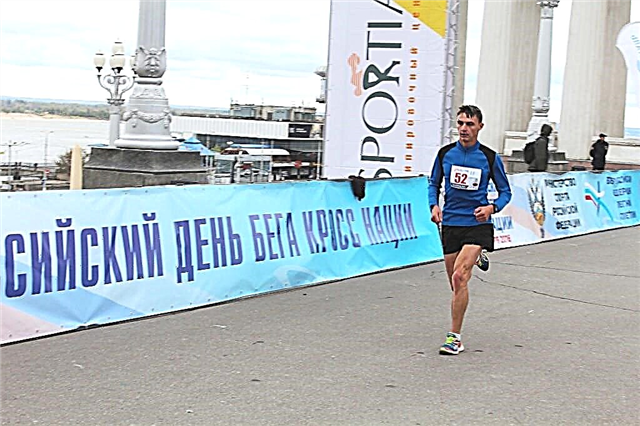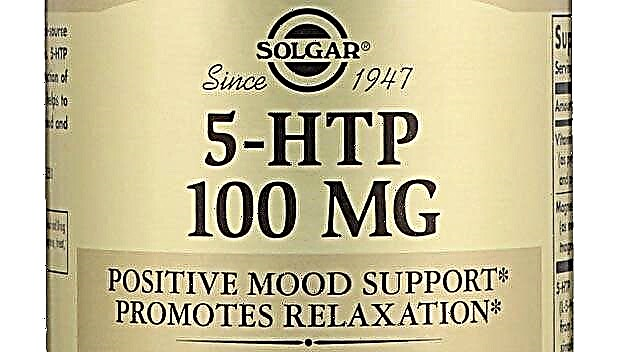Metabolism is an important puzzle in the picture or a milestone on the path to building a weight loss scheme or gaining muscle mass. Understanding the action of the basic processes of biochemistry, it is easier to achieve your goals, regardless of body type. Let's consider what it is - let's explain it in simple language, without getting into the scientific jungle.
Let's go back to the topic of puzzles. If you imagine an organism as a set of elements, then human metabolism is a mechanism that collects details into a large meaningful picture. This is a metabolism, a complex of all biochemical reactions.
Any organism grows and functions due to the intake, transformation and removal of certain substances.
Metabolism regulates the processes of transformation of components coming from outside. Thanks to the built-in “customizer”, adaptation to external factors is possible. Without the underlying process, life would be impossible.
Body weight depends on a number of physiological parameters and the amount of calories consumed. There is a basic energy requirement. It is individual for each person. This need is called basal metabolism - the minimum daily "portion" of energy (calories) required for the normal functioning of the body at rest. You can calculate the metabolic rate * using the following formulas (* source - Wikipedia):
- for women: 655 + (9.6xP) + (1.8xL) - (4.7xT);
- for men: 66 + (13.7xP) + (5xL) - (6.8xT),
where, T - age (years), L - height (cm), P - body weight (kg).
Calorie content is calculated using the formulas. Men need to use the following formula:
88.362 + (13.397 * weight / kg) + (4.799 * height / cm) - (5.677 * age)
Women use this:
447.593 + (9.247 * weight / kg) + (3.098 * height / cm) - (4.330 * age)
The result of the calculations is a kind of zero mark. In an effort to lose weight, you need to consume less than the estimated number of calories. Bodybuilders, on the other hand, need to multiply the result by a certain factor.
The essence of metabolism
The metabolic process is the transformation of chemicals that are necessary for the full functioning of all systems of the human body. The systems and tissues of the body require components with a low-level structure. With food, we get high-level components that require splitting.
Metabolism is two types of processes related to each other:
- catabolism - the splitting of complex elements into simpler ones; as a result of decay, energy is generated;
- anabolism - the formation of substances necessary for the body from components obtained from outside; as a result, new cells and tissues are formed; these processes require a lot of energy.
The flow and alternation of processes is very complex. But a basic understanding of both is important for both weight loss and mass gain.

@ Evgeniya adobe.stock.com
Protein metabolism
Protein metabolism is the breakdown of protein into amino acids and the subsequent cascade of biochemical reactions with the products of their decay. Any strength athlete knows that protein is an essential component for building and generating muscle tissue. But, besides this, the protein performs other, equally important, functions:
- distributes nutrients throughout the body;
- ensures the normal functioning of the endocrine system;
- promotes the formation of sex hormones;
- accelerates the rate of biochemical processes;
- blood transport of oxygen, fats, a number of vitamins, minerals, carbohydrates, hormones and other components;
- plays a role in the consistency and usefulness of the functions of the immune system.
Protein metabolism consists of the following stages (source - Wikipedia):
- protein intake into the body;
- denaturation of elements to first-order proteins;
- splitting into individual amino acids;
- transportation of amino acids throughout the body;
- tissue building (for athletes, this means primarily building muscle);
- a new cycle of protein metabolism - at this stage, the metabolism of proteins unused in the construction occurs;
- elimination of spent amino acids.
An amino acid complex is extremely important for a full-fledged metabolism. By itself, the amount of protein is of little importance.
When solving sports and nutritional problems, it is necessary to monitor the composition of the components.
This is especially true for vegetarians, since plant products lack the necessary set of elements.
Fat metabolism
Fat is an important source of energy. With short-term physical activity, the glycogen energy in the muscles is used first. With prolonged exertion, the body receives energy from fats. From an understanding of the peculiarities of fat metabolism, the conclusion suggests itself - it takes quite a long and powerful work to break down fat reserves.
The body tries to keep most of the fat in reserve. In a normal state, only about 5% of fat is stably removed back. Lipid (fat) metabolism occurs in several stages:
- breakdown of fats in the gastrointestinal tract, their digestion and absorption;
- transfer of lipids from the intestine;
- intermediate exchange reactions;
- processes of fat catabolism;
- fatty acid catabolism.
Partial fat transformation takes place in the stomach. But the process is slow there. The main lipid breakdown occurs in the upper region of the small intestine.
The liver plays a big role in lipid metabolism.
Here, some of the components are oxidized, as a result of which energy is generated. The other part is broken down to the format of transportable components and enters the bloodstream.

@ Evgeniya adobe.stock.com
Carbohydrate metabolism
The main role of carbohydrate metabolism is determined by the energy value of the latter. The metabolic processes of these components account for about 60% of the total energy exchange in the body.
Full physical work is impossible without carbohydrates.
This is why fuel cells should be the basis of the diet for productive training. At a basic level, carbohydrates are glucose. It accumulates in the muscles and liver in the form of glycogen.
An important concept associated with carbohydrate metabolism is the glycemic index (GI). It reflects the rate at which carbohydrates are absorbed by the body and the rise in blood sugar. The GI scale is divided into 100 units, where 0 indicates carbohydrate-free foods, and 100 indicates foods saturated with this component.
Based on this, products are divided into simple and complex. The former are high GI, the latter are low. Understanding the difference between the two is very important. Simple carbohydrates break down very quickly into glucose. Thanks to this, the body receives a portion of energy in a matter of minutes. The downside is that there is enough energy surge for 30-50 minutes. When consuming a lot of fast carbs:
- there is weakness, lethargy;
- fat reserves are deposited;
- the pancreas is harmed, which contributes to the formation of diabetes mellitus;
- the risk of developing diseases of the cardiovascular system increases.
Complex carbohydrates take a long time to break down. But the recoil from them is felt up to 4 hours. The diet should be based on elements of this type.
Low GI foods:
| Product | GI |
| Soy | 15 |
| Mushrooms | 15 |
| Cabbage | 15 |
| Lentils | 25 |
| Milk | 30 |
| Fat-free cottage cheese | 30 |
| Pasta (not completely cooked) | 40 |
| Buckwheat | 50 |
Medium GI foods:
| Product | GI |
| Spaghetti | 55 |
| Oatmeal | 60 |
| Long grain rice | 60 |
| Bananas | 60 |
| Pasta with cheese | 65 |
| Whole wheat bread | 65 |
| Jacket potatoes | 65 |
| Wheat flour | 65 |
High GI foods:
| Product | GI |
| White rice | 70 |
| Dumplings | 70 |
| Sweet carbonated drinks | 70 |
| Milk chocolate | 70 |
| Rice porridge with milk | 75 |
| Sweet pastries | 75 |
| Instant porridge | 85 |
| Honey | 90 |
| Rice noodles | 95 |
| Butter buns | 95 |
| White bread | 100 |
Exchange of water and minerals
Most of the body is water. The significance of metabolism in this context takes on a pronounced connotation. The brain is 85% water, blood 80%, muscles 75%, bones 25%, adipose tissue 20%.
Water is removed:
- through the lungs - 300 ml / day (on average);
- through the skin - 500 ml;
- with urine - 1700 ml.
The ratio of consumed fluid to excreted is called water balance. If the intake is less than the output, the systems fail in the body. The rate of water consumption per day depends on the state of health, in the first place.
In the absence of contraindications, for example, pathology of the kidneys, heart, blood vessels, etc., this is approximately 1.5-2.5 liters per day. This amount is sufficient to ensure good productivity and well-being.
But, with intense sweating, the proper level of consumed water can reach 6-7 liters (source - FGBU, Endocrinological Research Center of the Ministry of Health of the Russian Federation, Moscow. “Nutrition for sports.”) A dangerous condition for athletes is dehydration, which can only be prevented by calculation individual fluid needs.
The optimal rate of the required amount of fluid for a person per day must be calculated using the following formula:
- V = (M * 0.03) + (T * 0.4) - women;
- V = (M * 0.04) + (T * 0.6) - for men,
where, V is the volume of the required amount of water in liters per day, M is the body weight of a person, T is the time of direct sports or other activity that requires energy consumption (in the absence of these, 0 is set). This calculation takes into account all the required parameters: gender, weight and period of exposure to the body.
Since minerals are also washed out of the body with water, for this reason it is advisable to supplement ordinary water with mineral water. This is one of the easiest ways to make up for the deficiency of essential elements. It is recommended, with the help of a nutritionist, to calculate the rate of salts and minerals and draw up a diet based on these calculations.

@ Evgeniya adobe.stock.com
Metabolism is a complex and fragile process. If a failure occurs at one of the stages of anabolism or catabolism, the whole biochemical "structure" falls. Metabolic problems are provoked by:
- heredity;
- wrong way of life;
- various diseases;
- living in an area with poor ecology.
The main reason for failures is a disregard for your body. An abundant amount of junk food is a scourge of our time. Improper diet and inactivity lead to a slowdown in metabolism. As a result, a lot of people are obese with all the consequences.
Among the symptoms that hint that one should tackle the regulation of metabolism:
- increased or decreased body weight;
- deterioration in appetite or, conversely, a constant desire to eat;
- chronic fatigue;
- visual skin problems;
- destruction of tooth enamel;
- brittle hair and nails;
- increased irritability;
- the appearance of diarrhea, alternating with constipation;
- pasty upper and lower (more often) limbs.
It is possible and necessary to deal with the consequences of metabolic disorders. But it is foolish to count on an instant effect. Therefore, it is better not to start yourself. And if it does happen, you need to turn to specialists and be patient.

@ Evgeniya adobe.stock.com
The metabolic rate depends not only on genetic factors and lifestyle, but also on gender and age. Testosterone levels in men are much higher. Thanks to this, representatives of the stronger sex are prone to gaining muscle mass. And the muscles need energy. Therefore, the basic metabolism in men is higher - the body consumes more calories (source - Scientific Research Institute of Hygiene and Human Ecology, Samara State Medical University, “Correlation of basal metabolic rates in different ways of determining it”).
Women, on the other hand, are more likely to store fat. The reason lies in the large number of female sex hormones - estrogens. Women are forced to monitor their figures more closely, as going beyond a healthy lifestyle immediately responds with an increase in weight.
But there are also exceptions. Some men easily gain excess weight, while some women are stable in this regard, even regularly overeating. This is because the abundance of factors affecting metabolic rate are tightly intertwined. But overall, gender plays a huge role.
For most people, basal metabolism changes with age. This is easy to notice by observing the changes in your form or the form of friends. Not trying to resist time, after 30-40 years, or even earlier, many people begin to blur. This is also inherent in ectomorphs. In their youth, they hardly manage to gain even a kilogram. With age, kilograms come by themselves. Even if not in the same amount as in meso- and endomorphs.
To confidently resist age-related changes, you need to become an adherent of a healthy lifestyle - to eat wisely and give the body physical activity.
Count calories based on individual needs (formulas to help), exercise, and metabolism will be normal. Unless, of course, there are other kinds of problems.
How to eat right? To pay great attention to products, thanks to which metabolic functions in the body are performed correctly. The diet should be rich:
- coarse vegetable fiber - carrots, cabbage, beets, etc.;
- fruit;
- greens;
- lean meat;
- seafood.
When choosing any diet, even the most useful, it is recommended to build on the initial state of health.
For example, in obese people, especially after 40-45 years, the risk of developing gout increases, or it already exists.
In such cases, it is strictly forbidden to eat sorrel and spinach from greens. Raspberries, cranberries and grapes are prohibited from fruits and berries. In other cases, with high cholesterol, some of the seafood is excluded, for example, shrimp.
It is recommended to eat often and fractionally, not to neglect breakfast, to take into account the compatibility of products. It is best to either study the issue in detail, or seek help from a specialist. Since the body works with what it was given, normal metabolism can only be counted on if the diet is designed taking into account the individual needs and characteristics of the body.









